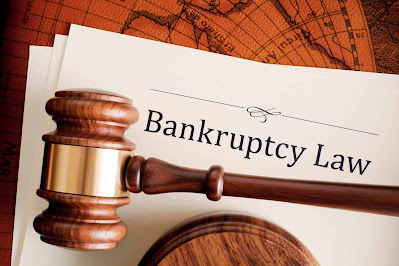What Is The Difference Between Chapter 7 and Chapter 13 Bankruptcy?
Bankruptcy is a legal process designed to provide individuals and businesses with relief from overwhelming debt. For individuals, two common forms of bankruptcy under the United States Bankruptcy Code are Chapter 7 and Chapter 13. Each chapter offers distinct approaches to debt relief, tailored to different financial circumstances. This article aims to highlight the key differences between Chapter 7 and Chapter 13 bankruptcy, providing an overview of their respective processes and outcomes.
Understanding the Basics of Bankruptcy Law
Before delving into the specifics of Chapter 7 and Chapter 13 bankruptcy, it's important to grasp the foundational principles of bankruptcy law in the United States. Bankruptcy law is primarily governed by the Bankruptcy Code, a federal statute that outlines the rules and procedures for handling bankruptcies. It provides individuals and businesses with a legal framework to eliminate or restructure their debts while protecting their assets.Chapter 7 Bankruptcy: Liquidation for Fresh Start
Chapter 7 bankruptcy, often referred to as "liquidation bankruptcy," involves the liquidation of a debtor's non-exempt assets to repay creditors. The process begins by filing a petition with the bankruptcy court, triggering an automatic stay that halts creditor collection efforts.A bankruptcy trustee is appointed to oversee the case and evaluate the debtor's assets. Non-exempt property, such as luxury items or valuable assets beyond specified limits, may be sold to satisfy the debts owed to creditors. However, exemptions are available to protect essential assets such as a primary residence, a vehicle, and personal belongings.
Once the liquidation process is complete, most remaining debts are discharged, providing the debtor with a fresh financial start. However, certain debts, such as student loans, tax obligations, and child support, generally cannot be discharged under Chapter 7.
Chapter 13 Bankruptcy: Reorganization for Debt Repayment
Chapter 13 bankruptcy, also known as "reorganization bankruptcy" or "wage earner's bankruptcy," offers individuals with a regular income an opportunity to develop a court-approved repayment plan to resolve their debts. This chapter allows debtors to retain their assets while repaying creditors over a three to five-year period.Under Chapter 13, the debtor submits a repayment plan to the court outlining how they will repay their debts. The plan is based on the individual's disposable income, taking into account reasonable living expenses and obligations such as mortgage or car payments. Once the court approves the plan, the debtor makes regular payments to a bankruptcy trustee, who then distributes the funds to creditors according to the plan's terms.
Unlike Chapter 7, Chapter 13 allows individuals to address certain debts that are not dischargeable in Chapter 7, such as tax obligations and missed mortgage or car payments. By adhering to the repayment plan, debtors can gradually catch up on missed payments and regain financial stability.
Key Differences Between Chapter 7 and Chapter 13 Bankruptcy
The choice between Chapter 7 and Chapter 13 bankruptcy depends on various factors, including income, assets, and the nature of the debts. Here are some key differences between the two chapters:- Eligibility: Chapter 7 has income limits, while Chapter 13 is available to individuals with regular income.
- Asset Liquidation: Chapter 7 involves the potential liquidation of non-exempt assets, while Chapter 13 allows debtors to keep their assets.
- Debt Discharge: Chapter 7 generally provides a quicker discharge of most debts, while Chapter 13 requires a repayment plan.
- Length of Process: Chapter 7 is typically resolved within a few months, while Chapter 13 lasts for three to five years.
- Impact on Credit: Both chapters have a negative impact on credit, but the effects may differ depending on individual circumstances.
Seeking Legal Advice and Further Information
Navigating the bankruptcy process can be complex and requires a thorough understanding of the applicable laws. It is crucial to consult with an experienced bankruptcy attorney to assess your financial situation and determine the most appropriate course of action.For further information and resources on bankruptcy, you may find the following link helpful: External Link: Bankruptcy Basics - United States Courts




Post a Comment
0 Comments